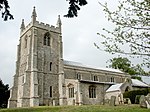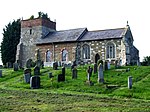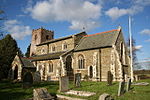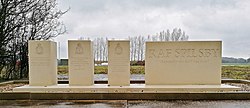Thorpe Culvert railway station
DfT Category F1 stationsFormer Great Northern Railway stationsLow usage railway stations in the United KingdomRailway stations in Great Britain opened in 1871Railway stations in Lincolnshire ... and 2 more
Railway stations served by East Midlands RailwayUse British English from October 2017

Thorpe Culvert railway station serves the village of Thorpe St Peter in Lincolnshire, England. It is situated 7 miles (11 km) from Skegness and 16.75 miles (27 km) from Boston. The station is now owned by Network Rail and managed by East Midlands Railway who provide all rail services. A signal box is present at the West end of the station to supervise a level crossing, however, the station itself is unstaffed and offers limited facilities other than two shelters, bicycle storage, timetables and modern 'Help Points'. The full range of tickets for travel are purchased from the guard on the train at no extra cost, there are no retail facilities at this station.
Excerpt from the Wikipedia article Thorpe Culvert railway station (License: CC BY-SA 3.0, Authors, Images).Thorpe Culvert railway station
Culvert Road, East Lindsey
Geographical coordinates (GPS) Address Nearby Places Show on map
Geographical coordinates (GPS)
| Latitude | Longitude |
|---|---|
| N 53.12303 ° | E 0.19937 ° |
Address
Culvert Road
PE24 4NL East Lindsey
England, United Kingdom
Open on Google Maps










